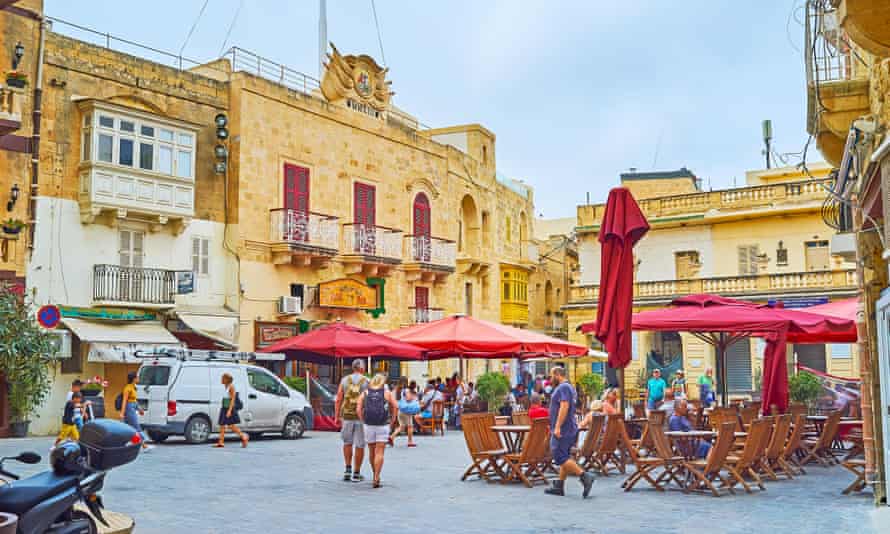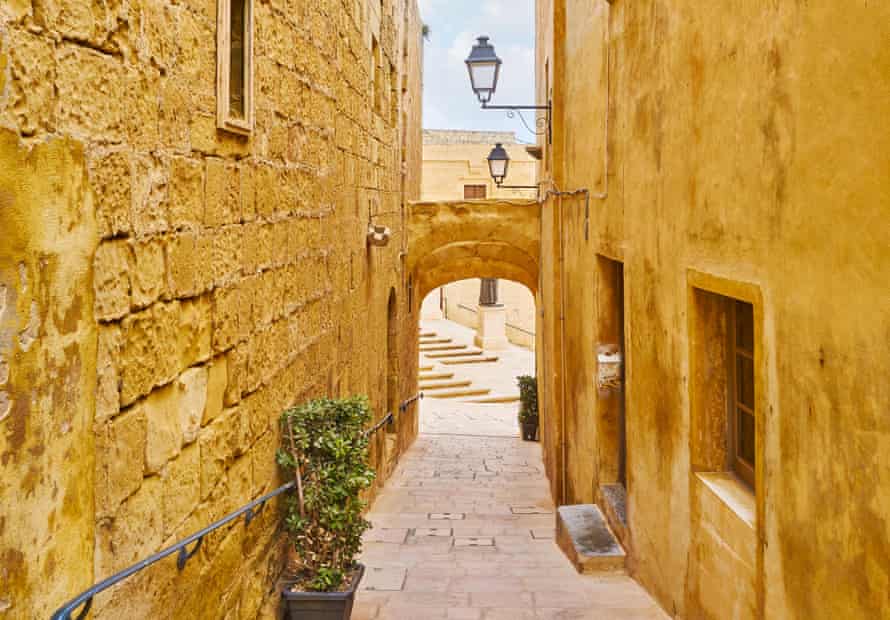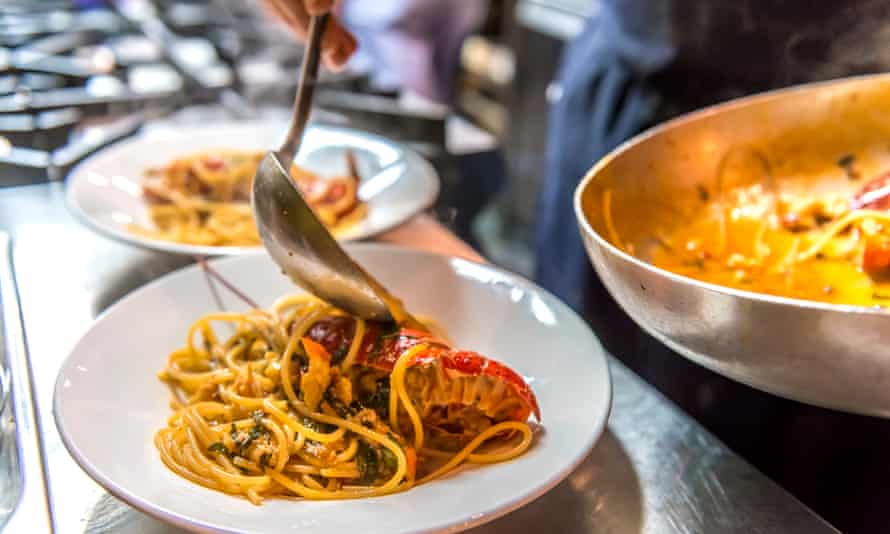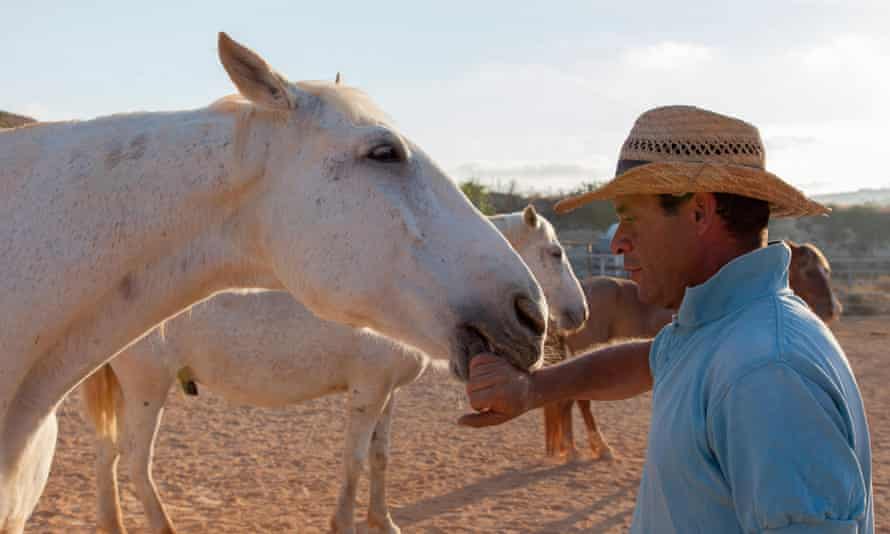Warm water rushed up the sand and fizzed over our feet like soda. Screaming with a combination of joy and nerves, my two-year-old scrambled on to my back as the next wave washed around my waist, draping ribbons of seaweed over us both. Just nine months old when the first lockdown struck, she had never seen the sea and didn’t quite know what to do. Soaked, she threw herself on to the hot, camel-coloured sand and was soon camouflaged. Amid snorkelling teenagers bobbing on the water like buoys, my four-year-old rode an inflatable pink flamingo, watching older swimmers cut through the Mediterranean’s green swirl and head towards its navy depths.

Measuring barely nine miles by five, the island of Gozo is Malta’s little sister, the quiet one with secret coves, ancient churches and family-run restaurants serving rabbit stew. Most visitors come on the ferry from Malta for a day trip, but we were here for a week, enjoying the calm and slowness as we drove around vineyards and pumpkin patches, the smell of citrus trees strong on the evening air.
Ramla Bay, where we were swimming, is a conservation area, backed by sand dunes and subject to sand-sifting and clean-ups, as evidenced by the lack of plastic and cigarette butts. The seabed is strewn with boulders and best tackled in a pair of swim shoes; your swimwear will fill with red sand. But none of this dissuades beach-goers, who rev up on quad bikes, push grandmas in wheelchairs, and share fresh pizza to Nelly Furtado beats before dozing as their limbs turn bronze.

By noon, taunted by the aroma of fried fish on the breeze, we gathered up toys, shook out towels and children, and called a Bolt to take us for lunch. Although bus services run around the island, we were advised to download the ride-hailing app, which offers a choice of green-energy taxis, minivans and cars with booster seats, along with the opportunity to chat to Gozitans young and old. In 15 minutes we arrived at Ta’ Philip, just above the harbour in the village of Ghajnsielem. Pushing through curtains made from threaded wine corks, we stepped into a modernised winery and were met by a teenager named Benjamin, who smiled through braces and showed us to a table by the open kitchen, from where we could hear the whomph of fire in pans.
With a farm-to-fork ethos, owner Philip Spiteri opened Ta’ Philip (Philip’s Place) in 2016 to focus on local specialities. Adamant about traditional methods, the 56-year-old restaurateur installed a wood-burning oven where suckling pigs are slow-roasted from midnight to 10am, along with local lamb and kid. While we waited, garlic baguettes arrived in brown paper bags. Lightly charred, they were so fresh the butter burned my fingertips. Philip swooped in with three ramekins of butterbean and garlic puree, tomato relish and kunserva helwa, an intense, sticky tomato conserve that’s “stirred and stirred with sea salt and sugar”, then spread into dishes to dry on the roof in the sun.
He brought over a bottle labelled “Ta’ Mena Estate”, and explains that Mena was his late mother, who began the fruit and vegetable farm much of his produce comes from. All his fish is caught locally. My lobster spaghetti was spun like a chignon and clipped with a flaming orange shell filled with meat. It was steeped in garlic, basil, white wine and stock, and so rich, firm and filling that I struggled to make it through my main course of qarabaghli mimli – a trio of round courgettes plumped with minced beef and pork, and capped with a crust of parmesan. But it was the homemade tiramisu that ensured we were the last customers to leave.
On the walk into the capital, Victoria, known locally as Rabat, we passed houses named Ave Maria, Saint Leo and Saint Anthony, many of which had cubby holes scooped out to fit a statuette of Mary or the local saint. But one thing was ever-present: a yellow aura created by the gebla tal-Franka, the soft, golden limestone that lights up the island against a crisp blue sky. And as the sun reddens around 7pm, Gozo’s balconies, ramparts and farmhouses take on a rose-gold hue, appearing to shimmer at the edges.

In the market, heavy ladies sat with their knees apart selling lace and earrings, grumbling as mopeds revved down the stone passages. My four-year-old and I sat together on the steps of the 18th-century Banca Giuratale, eating watermelon ice-cream and watching a filfola lizard shimmy up the bench, its feet shaped like pods of star anise.
The square is the hub of the action and I got chatting to a local surgeon. During the pandemic Gozo didn’t fare as badly as some had feared, owing to its “double isolation – as an island off an island”. Maltese tourists, unable to travel anywhere else, flocked to its beaches and restaurants in what was perhaps a redemptive moment for a people who have often felt let down by their Maltese siblings. “Dating back to the time of the Knights of St John,” the doctor said, “when Malta failed to defend Gozo, we have not felt as though we were properly looked after by the sister island, so there is a certain lack of trust there.”
The next morning, we spiralled down to the depths of the Ramla Valley, surrounded by an abundance of prickly pear cacti, their pads spread out like rabbit ears and rimmed with ripening fruit. It wasn’t even 10am but the heat had risen, and like a million maracas, the sound of cicadas shook out from the trees. We’d come to Dreams of Horses Farm, an equine therapy centre where rescue horses are brought to recuperate and, in turn, help people recovering from trauma. The owner, Victor Muscat, crunched across the drive tailed by two ducks and a turkey. Deeply tanned under his worn suede hat, he asked the children if they’d ever been around horses.

“The first thing people do is touch them on the nose. Imagine if I did the same thing to you: I don’t know you, but I walk over and touch your face? Horses are not able to see you from the front; you need to be standing to the side.” Victor led us into the stables to meet a young stallion rescued from an owner who could no longer look after it. He stood by its shoulder and began to rub with his fist. “Two warnings,” he said. “If his ears are flat, move back. And if he turns his head and opens his mouth a bit, that’s the second warning.” The horse nuzzled into his shoulder and Victor whispered, his face breaking into a fatherly smile.

Open for a couple of hours every day in the cooler evenings, the farm welcomes children and adults with disabilities or troubled backgrounds to come and groom the horses and donkeys. Victor brought out eight-year-old Shooting Star, a hip-height falabella horse with a thick fringe. He stood patiently while the girls plaited his blond mane, before walking him around the paddock in delight.
On the drive back across the island, we twisted round coastal roads, watching the sea drift in and out of view. Single crosses appeared on hilltops and small trucks passed by, piled high with watermelons. Winding through a village, we peeked into fisheries, antique shops and ice-cream parlours. Church bells pealed sweetly, neighbours chatted on steps and that local limestone illuminated the scene. Perhaps this little sister once felt obscured, but there’s little doubt that she is now out of her sibling’s shadow and bathed in her own, beautiful golden light.
For more information see visitmalta.com




